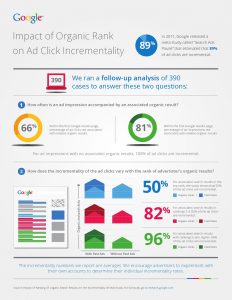With the rapid growth of the digital landscape over the past decade, it has become essential for businesses of all sizes to establish a strong online presence. Many customers now rely on search engines like Google to discover and research products or services before making a purchase decision. This shift in consumer behavior has made Search Engine Optimization (SEO) a crucial aspect of any successful business. In this article, we will delve into the world of SEO, providing business owners with the knowledge and tools they need to improve their online visibility, attract more organic traffic, and ultimately grow their bottom line.
Understanding SEO: A Recap of Its Importance
Previously, businesses largely relied on traditional marketing channels like TV, radio, and newspapers to reach their target audience. While effective, these methods often came with hefty price tags and could put a strain on marketing budgets. However, with the advent of SEO, businesses have an unprecedented opportunity to reach their audience at a fraction of the cost, ensuring a higher return on investment.
Simply put, SEO refers to the process of optimizing a website in a way that helps it rank higher in search engine results pages (SERPs) for relevant keywords. By improving their organic rankings on platforms like Google, businesses can increase their visibility, attract more organic traffic, and ultimately gain more opportunities for sales and brand exposure.
Key Elements Of A Successful SEO Strategy
-
Keyword Research: One of the cornerstones of an effective SEO strategy lies in thorough and insightful keyword research. Identifying relevant keywords that your target audience is searching for is crucial. By understanding these search terms, businesses can tailor their website content to match those queries, increasing the probability of appearing high in search engine rankings.
-
On-Page Optimization: On-page optimization involves optimizing specific elements on your website to make it more search engine-friendly. This could include optimizing meta tags, headers, and URLs to ensure they contain relevant keywords. Additionally, writing high-quality and relevant content with appropriate usage of keywords will help search engines understand the context and relevance of your web page.
-
Link Building: In the world of SEO, the quantity and quality of inbound links to your website play a vital role in determining its authority and visibility. High-quality backlinks from reputable websites indicate to search engines that your content holds value and is trustworthy. Developing a comprehensive link building strategy is key to improving your organic search rankings.
-
Technical SEO: Often overlooked, but just as important as on-page optimization and link building, technical SEO pertains to the technical elements of your website that influence its crawlability and indexing by search engines. Ensuring that your website is user-friendly, loads quickly, has clean code, is mobile responsive, and follows structured data guidelines can all positively impact your rankings.
-
User Experience (UX): It is no secret that search engines prioritize user satisfaction. Consequently, creating an exceptional user experience on your website is an indirect yet significant SEO factor. Focus on intuitive navigation, fast-loading pages, mobile-friendliness, engaging content, and easy-to-read layouts. Delivering a seamless user experience ensures visitors are more likely to explore further, increasing conversion rates and decreasing bounce rates, both of which contribute positively to your search engine rankings.
SEO Best Practices For Business Owners
Implementing an effective SEO strategy can be challenging for business owners who aren’t SEO experts. However, with the following best practices, you can set your business on the path to success:
1. Invest in an SEO Audit
An SEO audit performed by a professional can shed light on areas of improvement for your current website. It will help identify derailing factors, provide a baseline for optimization efforts, and investigate the technical elements that could impact organic rankings. Insights from a comprehensive SEO audit act as the foundation for your SEO strategy development.
2. Focus on Mobile-First Indexing
With an increasing number of users browsing on mobile devices, search engines now prioritize the mobile version of websites. Ensure that your website is mobile-friendly, has responsive design, and offers excellent user experience on smartphones and tablets. Optimize snippets and meta tags for both desktop and mobile to maintain consistent, high-quality content presentation across devices.
3. Leverage User-Friendly URLs
Creating URLs that are concise, easy to read, and include relevant keywords will help search engines and your audience understand the content of the page at a glance. Incorporate a logical structure that mirrors the hierarchy of your website to improve navigation and keyword association.
4. Create Compelling Title Tags and Meta Descriptions
Title tags and meta descriptions are the headlines and ad copy that appear in search engine result pages. They give users a glimpse into your website’s content and influence whether they choose to click and visit your site. Optimize these elements strategically by including relevant keywords and captivating copy to improve click-through rates (CTR) and attract more organic traffic.
5. Produce High-Quality, Relevant Content
Content remains king in the world of SEO. Invest in creating high-quality, informative, and engaging content that satisfies search intent. Aim to solve users’ problems, answer their questions, and demonstrate your expertise in the industry. Use keywords strategically, but avoid keyword stuffing, as search engines are equipped to recognize such practices and penalize excessive use.
6. Harness the Power of Local SEO
For small businesses targeting local customers, implementing local SEO strategies is vital. Adding relevant local keywords and location information, registering your business on Google My Business, and earning positive reviews and ratings are essential steps to improve visibility in local search results.
7. Engage in Ethical Link-Building Strategies
Building high-quality backlinks from reputable websites plays a crucial role in optimizing your organic search rankings. However, it’s essential to focus on ethical link-building practices. Avoid black hat techniques, such as buying links or participating in link farms, as these can lead to severe penalties from search engines. Instead, strive to earn natural links by creating outstanding content that genuinely deserves to be linked to and by forming partnerships with relevant businesses and influencers.
LinkedIn lists over 13 million SEO-related job openings, thus showing the importance and need for business owners to educate themselves in this area.
Remaining on Top of SEO Trends
SEO is an ever-evolving field, and it is crucial for any business owner to stay up to date with the latest trends and developments. The strategic implementation of emerging SEO techniques can give your business a competitive edge.
By following industry blogs, engaging in webinars, and attending SEO conferences, you can gain valuable insights from experts and stay ahead of the curve. Be it understanding new ranking factors or adapting strategies to accommodate algorithm updates – continuous learning is key.
Conclusion
Investing time and effort into SEO provides a long-term sustainable approach to increasing online visibility, driving organic traffic, and attracting qualified leads. By understanding the crucial elements of a successful SEO strategy, focusing on best practices, and staying informed about the latest trends, business owners can position themselves consistently in front of their target audience. SEO is no longer an optional marketing strategy; it is a necessity for businesses looking to thrive in a digital world. So take the first step, harness the power of SEO, and unlock your business’s true online potential.







